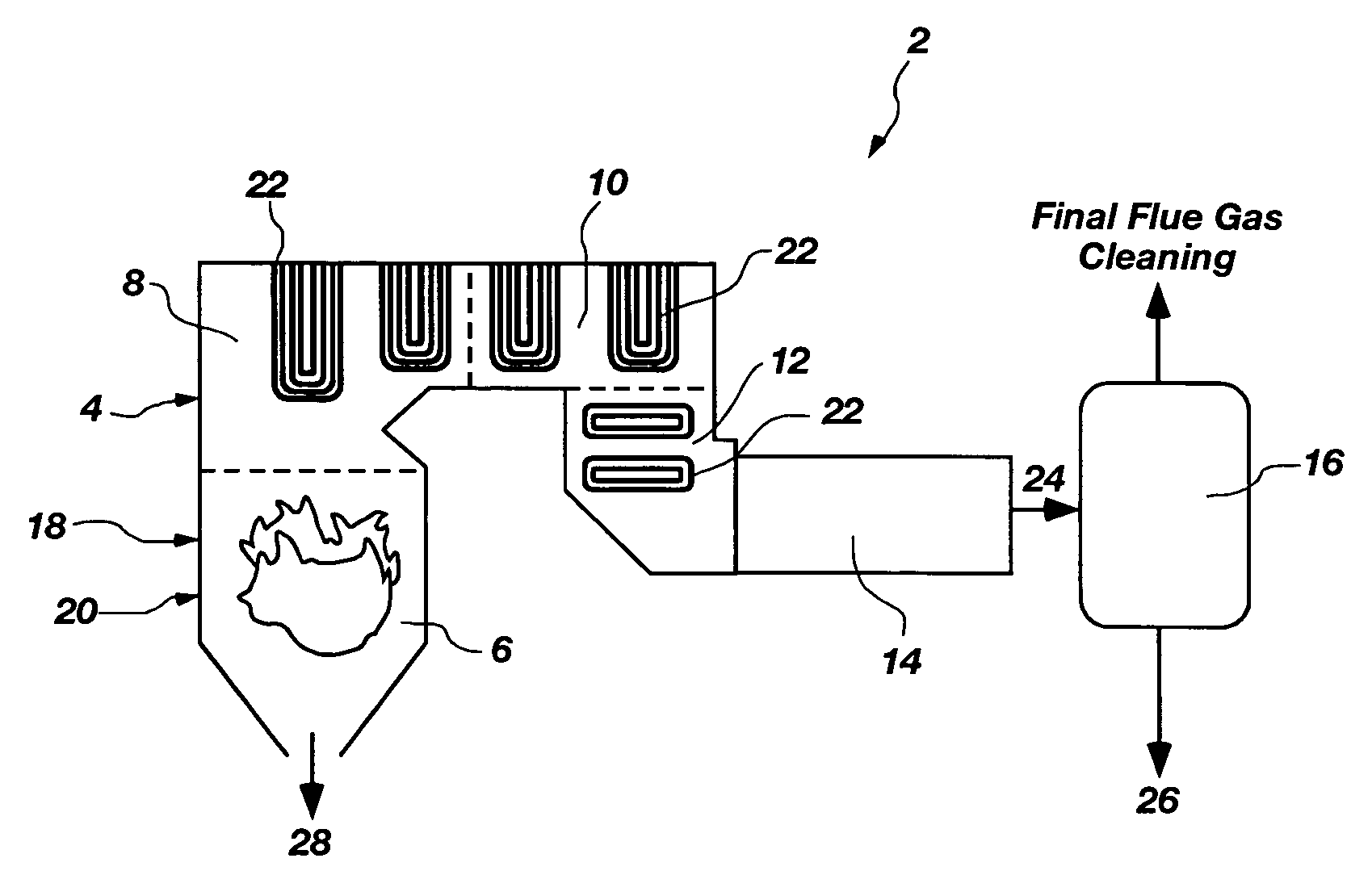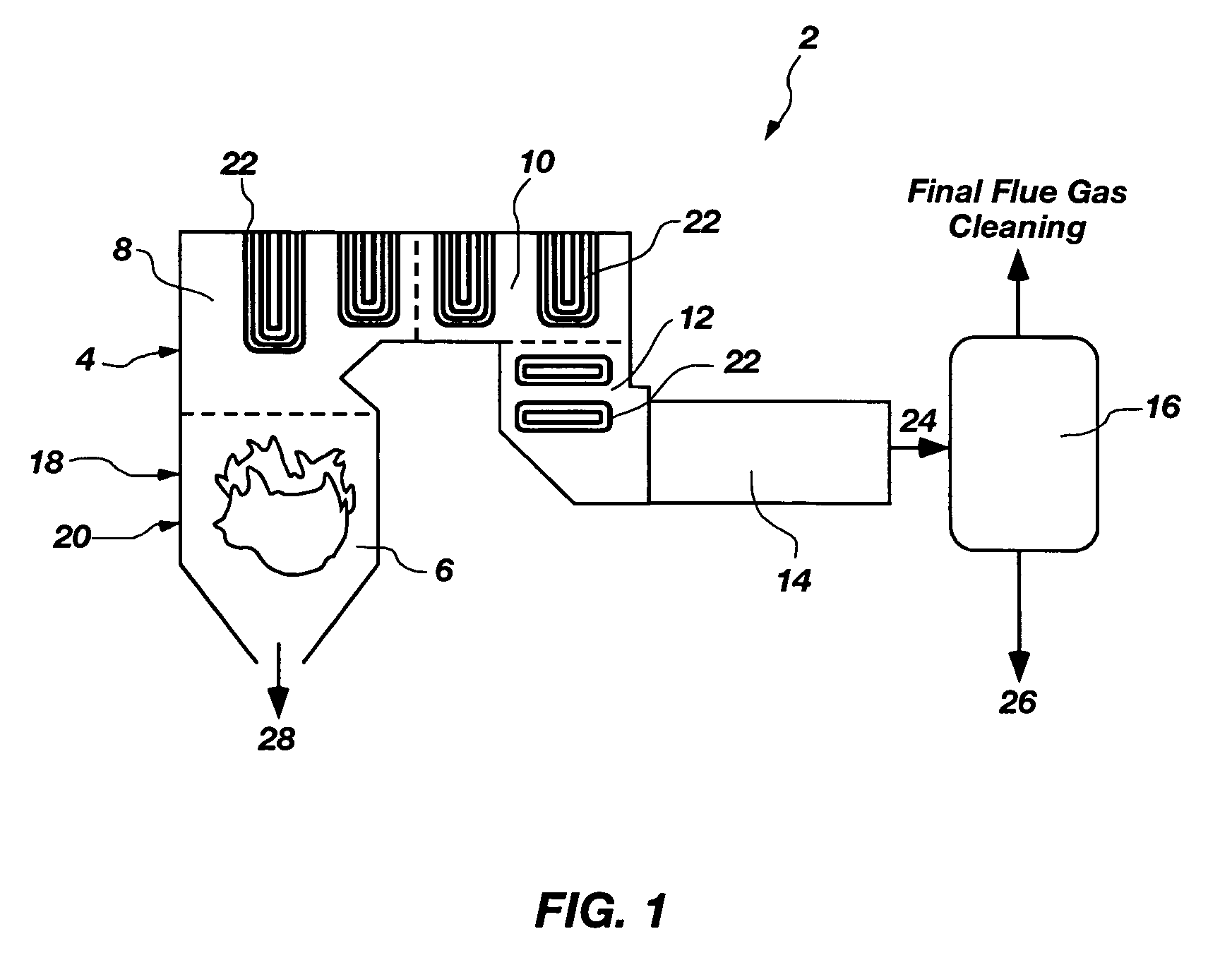Method for oil shale pollutant sorption/NOx reburning multi-pollutant control
a technology of oil shale and nox, which is applied in the direction of machines/engines, combustion using lump and gaseous fuel, chemical/physical processes, etc., can solve the problems of high implementation cost, corroding acid gases used in combustion equipment, and variable pollutants, so as to reduce nox reburning. , the effect of reducing the number of pollutant sorption
- Summary
- Abstract
- Description
- Claims
- Application Information
AI Technical Summary
Benefits of technology
Problems solved by technology
Method used
Image
Examples
Embodiment Construction
[0020]Oil shale is used to decrease or eliminate at least one pollutant that is produced during combustion of a primary fuel. The primary fuel may be coal, biomass, MSW, RDF, or mixtures thereof. During combustion of the primary fuel in a combustion chamber, the oil shale may function as a sorbent to decrease an amount of the pollutant(s) that is released from the combustion chamber. Alternatively, combustion of the oil shale may produce a reductant, which reduces the pollutant(s) to a more benign chemical species, decreasing the amount of the pollutant(s) that is released. By adjusting or controlling a temperature in the combustion chamber, the pollutant may be adsorbed or absorbed onto the oil shale or may be reduced by the reductant produced by the oil shale. The pollutant may be removed from the combustion chamber by contacting the pollutant with the oil shale for a sufficient amount of time for the oil shale to function as a sorbent or for the reductant to chemically reduce the...
PUM
| Property | Measurement | Unit |
|---|---|---|
| temperature | aaaaa | aaaaa |
| temperature | aaaaa | aaaaa |
| temperature | aaaaa | aaaaa |
Abstract
Description
Claims
Application Information
 Login to View More
Login to View More - R&D
- Intellectual Property
- Life Sciences
- Materials
- Tech Scout
- Unparalleled Data Quality
- Higher Quality Content
- 60% Fewer Hallucinations
Browse by: Latest US Patents, China's latest patents, Technical Efficacy Thesaurus, Application Domain, Technology Topic, Popular Technical Reports.
© 2025 PatSnap. All rights reserved.Legal|Privacy policy|Modern Slavery Act Transparency Statement|Sitemap|About US| Contact US: help@patsnap.com


